NEC EA294WMi Review
by Chris Heinonen on February 10, 2014 6:00 AM ESTThe NEC EA294WMi encompasses 68.67% of the AdobeRGB colorspace. As sRGB is 68.9% that is within any margin of error for measurements on the primary and secondary colors. So we see full sRGB coverage, but nothing beyond as we are using regular white LED backlights here.
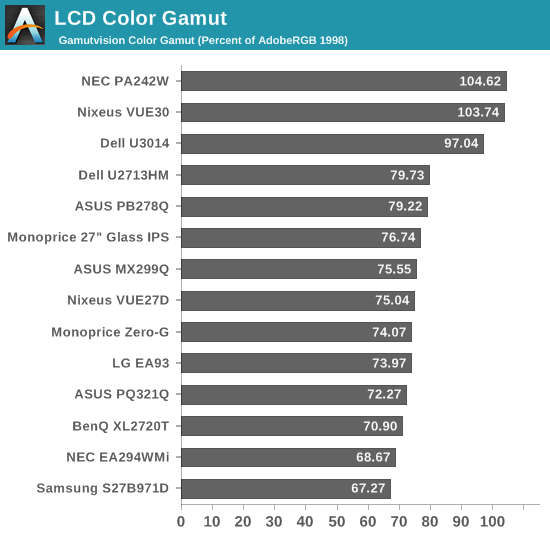
Input on the NEC is measured using the Leo Bodnar lag tester. Since it is a 1080p display (albeit wider) it should be very accurate when measured with a 1080p source. The average lag for the three measurement positions is 27.16ms, or 1.6 frames with a 60Hz game.
This isn’t fast compared to other displays so the NEC might not be the best monitor for serious gaming, or even the best 21:9 monitor for it. The ASUS MX299Q, with the same aspect ratio and resolution, has only 9 ms of lag and the LG EA93 is under 15ms. Usually I think of the 21:9 displays as good for gaming, with a wider field-of-view, but I’d have to recommend the other models over the NEC for this.
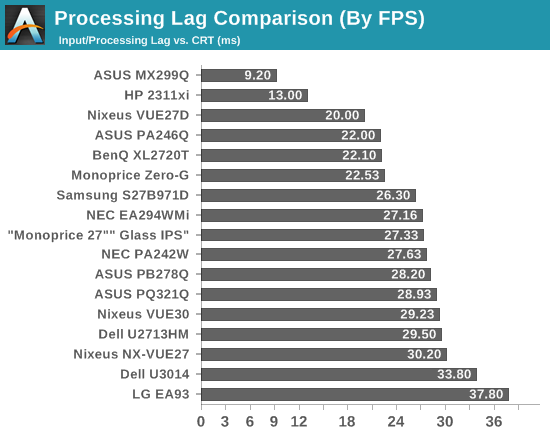
Power Use measures at 48 watts at maximum backlight and 18 watts at minimum backlight. Again these numbers are okay but the ASUS and LG both perform better among 21:9 displays. The candelas per watt is very low at minimum brightness but only because the NEC display has such a low minimum light level. I will start to collect data at an additional value, like 80 cd/m2, to make this more accurate. 18W minimum makes the NEC look much worse as it's minimum output is so low; the ASUS uses less power (16W) with 63 cd/m2 instead of NEC's 8 cd/m2.
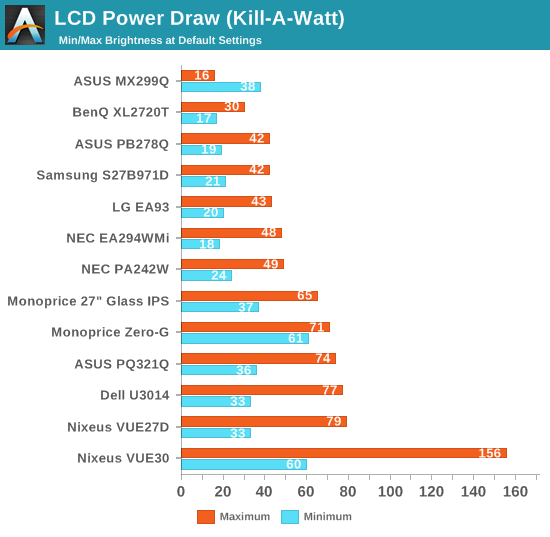
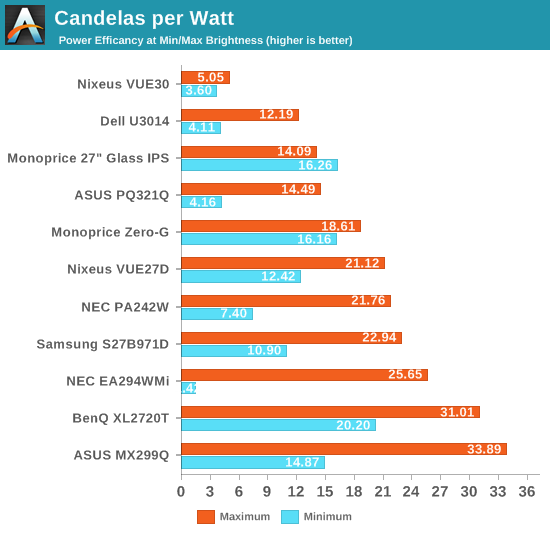


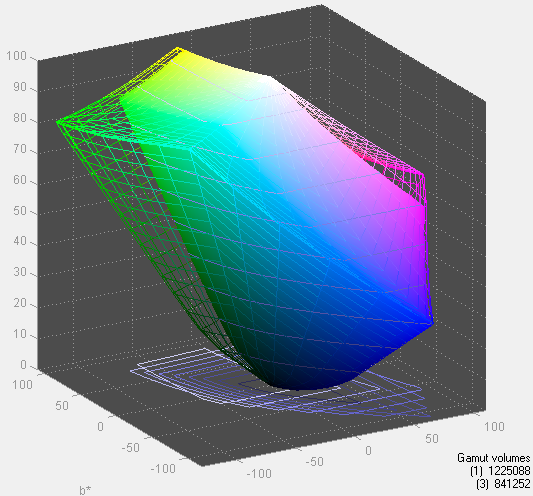








37 Comments
View All Comments
purerice - Monday, February 10, 2014 - link
good points there. My old monitor is 16x10 which was supposed to be 16x9+subtitles/menus but that didn't fly I guess.As long as you don't have to watch a movie like Multiplicity with the camera shaking back and forth to catch the various Michael Keatons (VHS version). That was perhaps the worst edit-butchering of any decent film I have ever seen.
iamezza - Monday, February 10, 2014 - link
The best use case by far for 21:9 is for gaming. Just about any game that uses a first person (and not just FPSs) or over the shoulder perspective is a lot better with a wider screen.I've had triple 16:9 screens for a couple of years and it friggin rocks!
kyuu - Monday, February 10, 2014 - link
Agreed -- I'm quite tempted to use a 21:9 monitor since it seems ideal for gaming.Panzerknacker - Monday, February 10, 2014 - link
Nice screen but too high input lag.purerice - Monday, February 10, 2014 - link
?????? Stated market, medical imaging...Not sure how much movement you get in your MRIs or X-rays but the ones I have seen seem to be pretty still.
gochichi - Friday, February 14, 2014 - link
Though it sounds like it may be insignificant, there's actually 33% more pixels in a 2560x1440 27" display than 2560x1080.I initially thought that if a laptop could drive one resolution it would drive the other and vice versa. This is NOT the case in practice, where I had laptops whose HDMI outputs displayed plug-n-play perfection on the 2560x1080 display but couldn't handle 2560x1440 without a bunch hacking and compromise(to where you had to hack the settings and go to 30Hz and so on, or it just going 1920x1080 etc).
So keep that in mind, I had an HD4000 Samsung Ultrabook that worked flawlessly with the 2560x1080 but not at all on any of me 1440 screens via HDMI.
So for some it may be well worth the strange aspect ratio to gain the plug and play functionality on some fairly decent still relevant laptops (the original 13" Yoga for example).
I'd love to see 1440P on a high quality 21" screen for some $400. 3360 x 1440 p sounds beautiful too. For me these 29" 1080p widescreen have pixels that are entirely too chunky... but I suppose for frame rate purposes having 25% fewer pixels to push would be a boon games.
2014 should be a year of much overdue innovation in the PC monitor space. I'm loving the 4k displays from Dell so far and can't wait to see what ASUS, Apple, and others will come up with.
dszc - Sunday, February 23, 2014 - link
Chris and Jarred,I can't thank you guys enough for your continuing excellent display reviews. You continue to be my trusted "go-to" source.
I have a request. I'd like to know what TV I can use as a monitor, so I'd like to see some tested. What I need doesn't need to be reference quality level, like some of the higher-end EIZOs or NECs. But it does need to be in the same ballpark as these: HP 27xi, AOC i2757fh, ViewSonic VX2770Smh-LED. We need a very accurate representation of what our customers are likely to see on the web in the sRGB color space.
I suspect that there are LOTS of folks out there who would like to have an accurate 1080p sRGB monitor in the 50-60" size that can be comfortably viewed by a few people simultaneously, whether it be a workgroup or small conference setting, or a home family room, or gaming group.
Anyway, please move this request up as high as you see fit on your list. Currently, we have lots of reviews and information on 20-30" monitors that are really largely similar. We could REALLY use your help on a bigger size class (40-60" TV size) of monitors.
Thanks for your consideration.
Ever a fan of Anandtech,
Dave